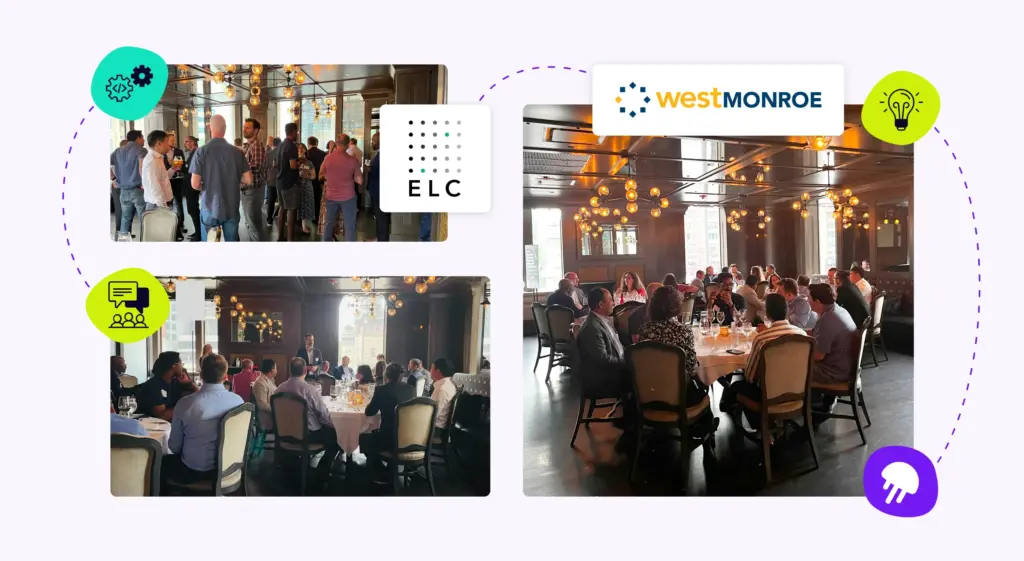Today, Jellyfish announced the recent significant growth we’ve experienced and some amazing momentum for our Engineering Business Management Platform. After raising over $12 million in funding from Accel, Wing, Pillar, and First Star to solve a problem my co-founders and I have repeatedly grappled with throughout our careers, it’s exciting to see that vision resonate so clearly. We have built something that addresses these challenges and fills a big gap in the market. So I want to take a few minutes to reflect on how we got here and what we’re looking forward to on the road ahead.
Jellyfish was born from the challenges my co-founders and I faced as engineering and product leaders. When we realized that so many others had felt these very challenges, we knew that we had to solve them. And while the world has changed drastically, even just in the last few weeks, these challenges persist, amplified by many of the trends and realities – remote work, difficult economic conditions, a suddenly heightened need for cross-functional alignment – that engineering leaders are faced with today.
A Brief History: Our Relationship with Engineering Leadership
Dave, Phil, and I grew up running engineering and product teams in the late ’90s and early aughts. As our teams grew, the responsibility of leading them became a larger and larger challenge. It wasn’t just a matter of managing the growing teams, but also the difficulty of leading the teams in ways that aligned and spoke to the business. The three of us often joked about running into our CEOs in the hallways, when they would ask us what each engineer was working on, seriously expecting a simple answer. At some point, each of us had several hundred people in our organizations with dozens of strategic initiatives in flight, and very little support from the rest of the executive team. It’s no wonder CTOs and VPEs have some of the highest rates of turnover among all executive positions at over 23% (compared, for example, to 17% for CEOs).
On a regular basis, we observed the other self-assured executives from every other department with these detailed spreadsheets, BI dashboards, and data sliced every which way. But the engineering executives? We were presenting emojis, traffic lights, and bullet points at exec meetings, dishing out and receiving blame for missed deadlines, buggy releases, or downtime. Sometimes we felt like we were building wholly misguided products but didn’t have the data to back that feeling.
This was even harder to swallow for us when we considered the very nature of the organizations we were running. Shouldn’t the engineering team be the most data-driven organization in the business? To us, at least when it came to making strategic decisions, it seemed like it was the least.
This feeling stayed with us through our careers, following us to different companies. We felt there had to be a better way.
Problem Solving
The three of us had all started in product and engineering in the often deliberately forgotten pre-salesforce days. In those days sales leaders had the same problems as we did, operating in a world where “trust me, I’ve got this quarter in the bag” was an acceptable response from your VP of Sales. Companies hit their sales numbers, or they didn’t, and the yelling, blaming, and firing ensued. Since then, Salesforce has taken “trust me” out of the equation. Sales executives no longer have to take their rep’s words for it, they can see the data, and they trust the data. And the other executives trust these leaders precisely because they trust only in the data. There were a common language and understanding, and as a result, companies actually started to pour resources into these data-driven departments.
Phil, Dave, and I couldn’t stop thinking about this lack of data-driven decision making among engineering executives. In many modern companies, data abounds and the need for visibility is even greater given overwhelming trends like distributed workforces. Surely now, engineering leaders have turned a corner? We started interviewing other engineering leaders. Lots of them. Everyone wanted to talk about it. And every one of them eagerly opened up to us about the problems they faced – the same ones we had faced for the last 20 years. They all leaned way in looking for answers – for a solution.
If there was really that much pain, then there’s a mission to solve. There’s a mission to make these leaders’ lives better. To increase alignment by taking “trust me” out of the equation, turning instead to data to make decisions. To derive a common language from that data and help engineering leaders communicate with business executives.
The Future
Jellyfish is on a mission to make engineering leaders’ lives better by elevating the practice of engineering business management. With the help of our customers, we at Jellyfish have built the world’s leading Engineering Management Platform, providing visibility into engineering organizations, the work they do, and how they operate. By analyzing engineering signals and contextual business data, Jellyfish enables Engineering leaders to align engineering decisions with business initiatives and deliver the right software, efficiently, on time.
I’m excited by the tremendous adoption of Jellyfish, on pace to more than triple our customer base this year! To me, it feels like we’re starting to solve our mission in earnest. Thank you to our incredible customers for not only helping us build this new platform but for leaning in and convincing us to do it in the first place. We look forward to working with you and many more like you in the years to come.







